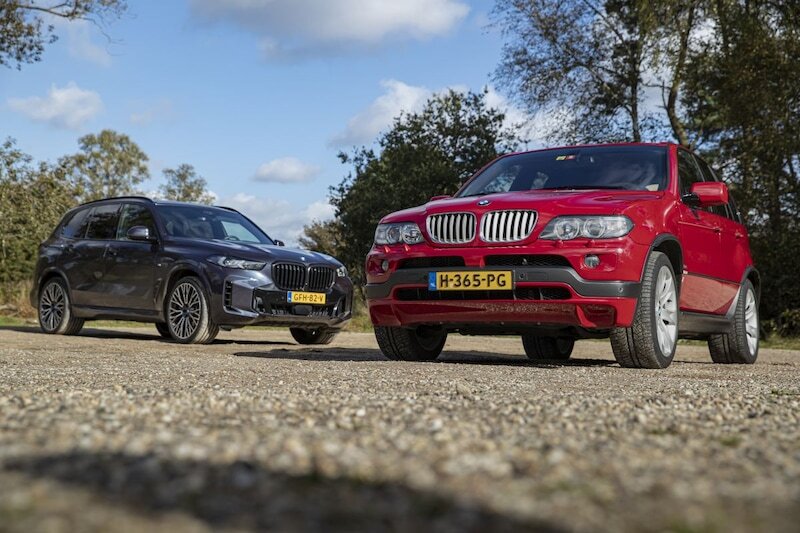
BMW entered the premium SUV segment early in 1999 with the X5. As an ambassador for sporty driving, the Bavarian manufacturer takes a significant risk because Freude am Fahren is not directly associated with the characteristics of this segment. Nevertheless, the BMW X5 leaves an indelible impression, even creating a new trend.
From Manageable to 35 Model Variants
In 1998, the situation at BMW, and within the rest of the automotive industry, was not at all comparable to what it is today. Back then, the average BMW dealer had a manageable range, consisting of the 3 and 5 Series in a number of body styles, the large 7 Series, and a coupe and a roadster in the form of the 8 Series and Z3. That was it. Nowadays, anyone walking into a BMW dealership must first attend a PowerPoint presentation to gain some insight into the model range, which consists of nearly 35 different types, even without counting all the engine variants.
X5 Actually as American as Can Be
For those who needed a spacious and practical car around the turn of the millennium, BMW produced the 5 Series Touring (E39), but unlike its predecessor (E34), it was not available as an iX with four-wheel drive. This may lead to the confusion that the new X5 is a 5 Series that stands higher on its wheels, but the X5 has nothing to do with the 5 Series at all. While the 5 Series Touring is German through and through, the X5 speaks English from birth with a heavy American accent. The model is not only primarily intended for the American market, but all production takes place in Spartanburg, Greer, South Carolina.
Not only in terms of appearance, but also in its dimensions, the X5 clearly differs from the 5 Series Touring, with a whopping 267 mm extra height, 125 mm more width, but 138 mm less length. The latter is the result of shorter front and rear overhangs, suggesting that the X5 should also feel at home off the beaten track, but that is certainly not the case.
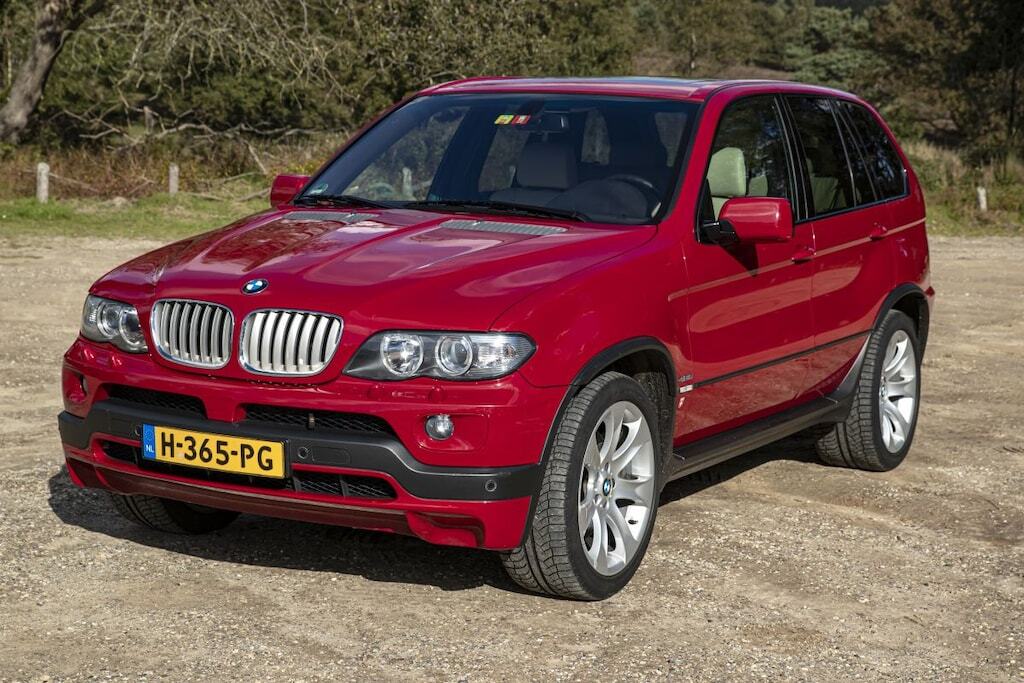
First SUV That Handles Better Than Many Sedans
BMW understands that the vast majority of buyers have no need to venture onto unpaved surfaces, with the possible exception of a wet lawn at a polo tournament. Therefore, all attention is focused on handling during development, and BMW is the first to come up with an SUV that handles better than many hatchbacks or sedans. Technology such as lockable differentials and a transfer case with terrain reduction is abandoned in favor of independent suspension and four-wheel drive, with as much as 62 percent of the available torque going to the rear wheels.
BMW therefore invariably speaks of a Sports Activity Vehicle (SAV) instead of a Sports Utility Vehicle, because the English term utility – especially in the US – evokes too many associations with commercial vehicles, and the marketers are doing everything they can to emphasize an active lifestyle.
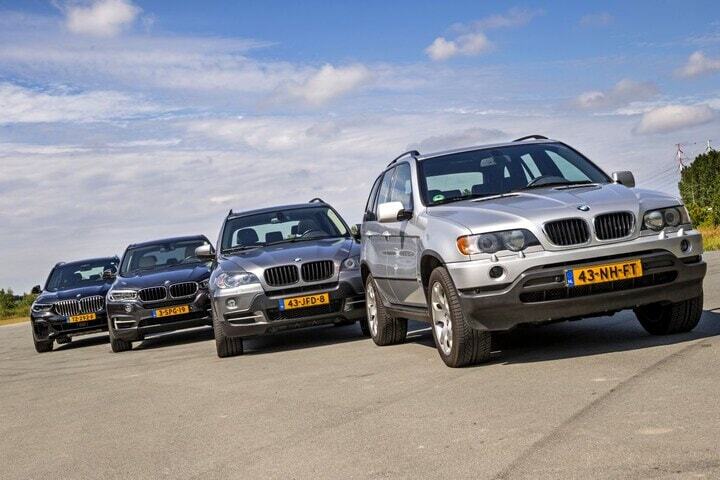
In 2019, we reflected on 20 years of BMW X5
First BMW X5 Revolutionary
Thus, the first generation X5 is revolutionary for both BMW and within its segment, but when we look at the later generations of the X5, the key word is no longer revolution, but rather evolution. The E70 from 2006, the F15 from 2013, and the G05 from 2018 are all faithful followers of the initial concept, without major innovations. Or it must be the arrival of an official M-variant in the second generation, or the X6 that sets the trend for Sport Utility Coupés.
In 2023, BMW comes with the LCI shown here for the fourth generation X5, which stands for Life-Cycle Impulse and that is Bavarian marketing language for facelift. Where many recent BMW models get very bold designs, the X5 LCI fortunately stays close to the conventional BMW appearance, so with a relatively modest-sized grille and without any urge to provoke.
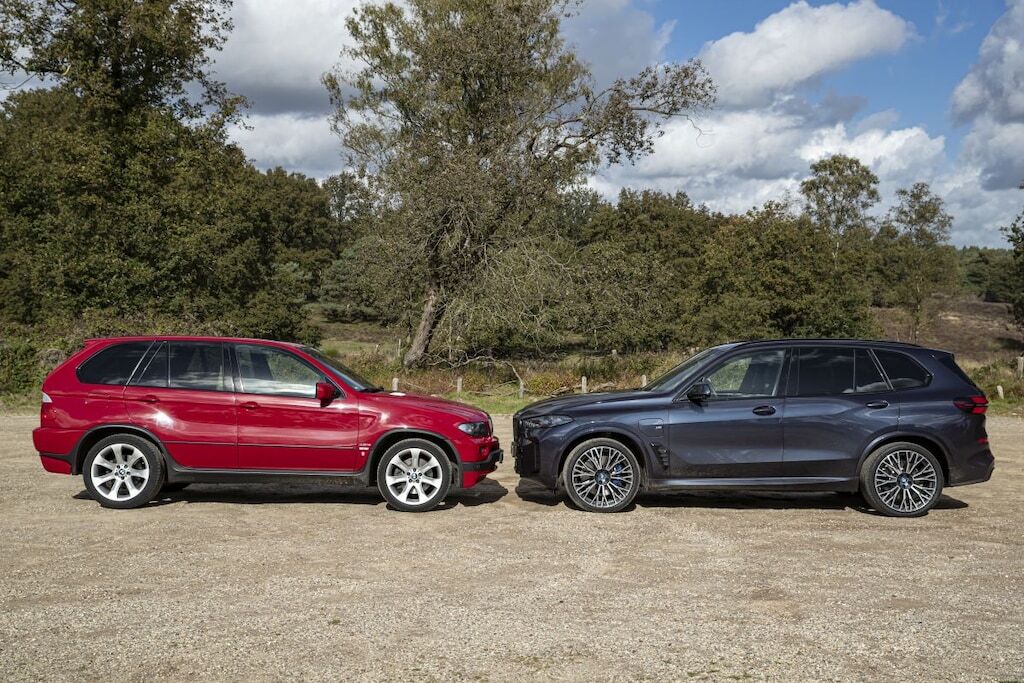
Porsche Follows with the Cayenne
BMW is not only the first in this segment with sporty driving characteristics, but even sets a trend with it. Porsche only comes with the Cayenne in 2002, but then the horsepower race for SUVs actually breaks loose. Eventually, even Land Rover gives in and the Range Rover Sport appears in 2005. BMW does not stay away from this race, because in 2001 the 4.6is comes as a sporty variant of the regular 4.4 V8 with more cylinder capacity and power, larger brakes and 20-inch wheels and a choice of only four exclusive colors, namely black, silver, red and blue.
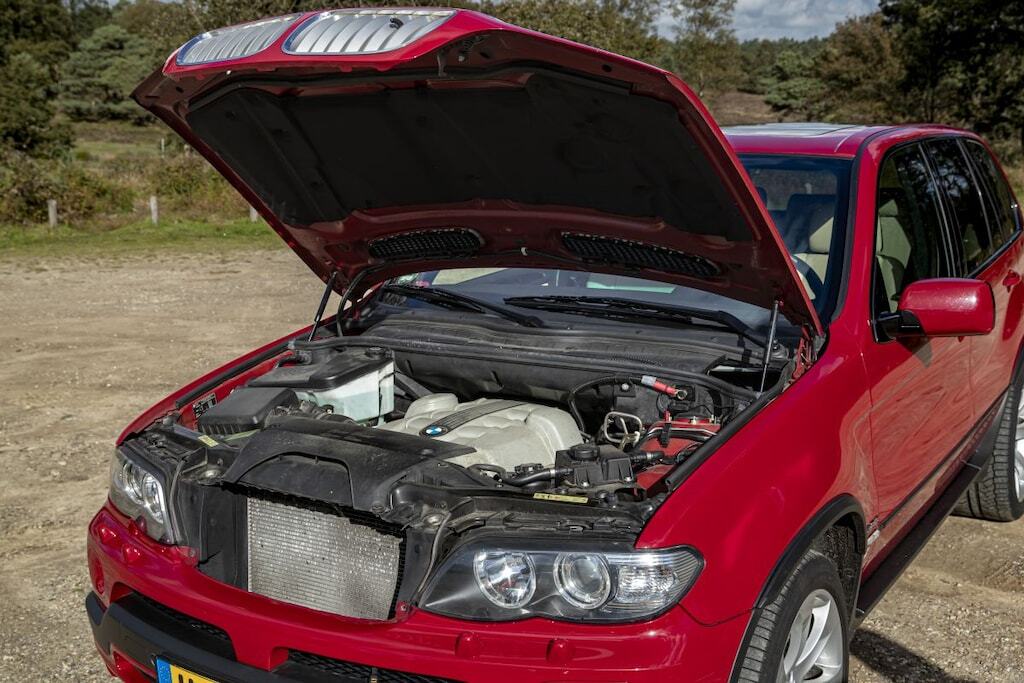
In 2004, this sporty X5 as part of the facelift makes way for the 4.8is with a larger cylinder capacity and 360 hp instead of 347. The eight-cylinders in the 4.6is and 4.8is are respectively the M62 and N62. These are not the same, but are related to the S62 that serves in the M5 (E39) and Z8. For that reason, BMW made the deliberate decision at the time not to provide the sporty X5 with an M-label. It would undoubtedly have been considered sacrilege by many enthusiasts …
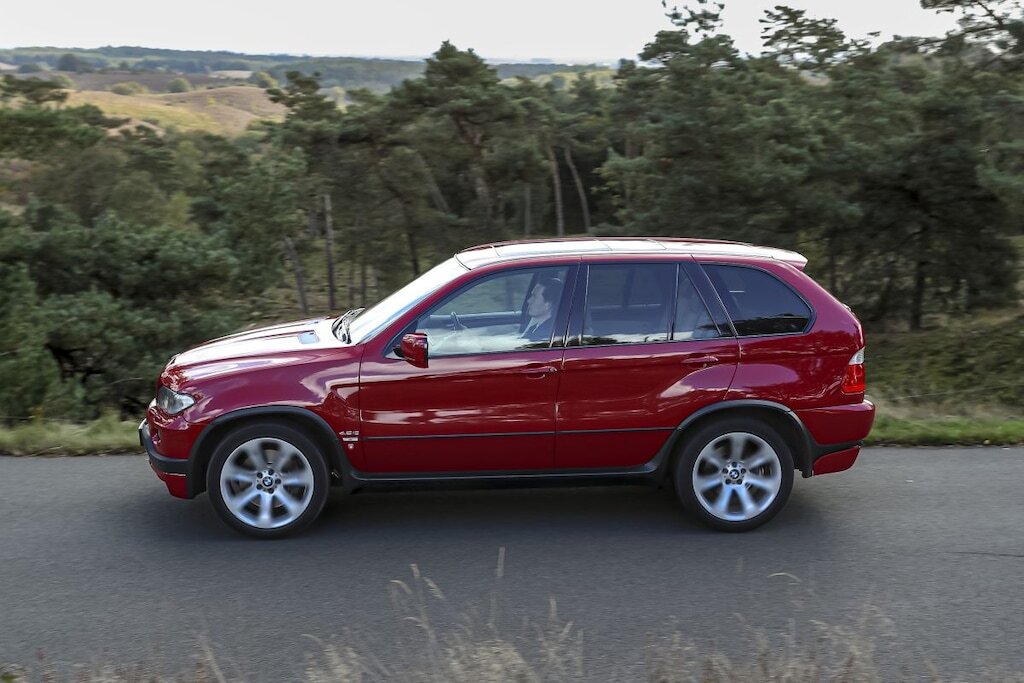
The X5 4.8is Might Well Have Deserved an M-badge
After just a few kilometers, the thought arises that the 4.8is with that V8 would have been a better candidate for an M-badge. Granted, BMW does not see the xDrive50e as a full M-model, because only a few optional M-packages are ticked, but the logos are there. Anyone who wants a ‘real’ M-variant of the X5 today can choose the X5 M Competition, which with the S68 V8 biturbo including 48-volt mild-hybrid system and 626 hp is at the top of the range. A less potent variant of that same V8 can also be found in the X5 M60i and that is again a so-called M Performance model. So there is enough choice, we will say.
At low revs, the atmospheric V8 hardly distinguishes itself from an arbitrary American eight-cylinder in terms of its ‘accent’, but at higher revs, the sporty genes from Munich prevail. The automatic transmission may seem under-equipped by current standards with six gears, but this transmission shifts almost imperceptibly and always knows how to choose the right gear.

In combination with the firmer but not rock-hard chassis and the communicative steering, this makes the 4.8is an entertaining family car that offers enough of everything, but not too much of anything. The seating comfort is very good for the front passengers, but unfortunately SUVs do not excel with a comfortable seat in the back. The children will have to put up with it, but they have enough space in the back anyway.
Current X5 More Distant
That the current X5 is better than the first generation in almost all respects should come as no surprise. When it comes to comfort, safety and technology, the G05 scores significantly higher than the E53, but in the area of the driving experience it is different. The air suspension, steering and hybrid powertrain create a certain degree of distance, which the 4.8is does not know. It steers much more directly and also involves the driver more in the driving, although both cars hardly differ in weight. The hybrid is as expected a heavy guy with 2,395 kilos clean to the hook, but the eight-cylinder is that with 2,275 kilos without more.
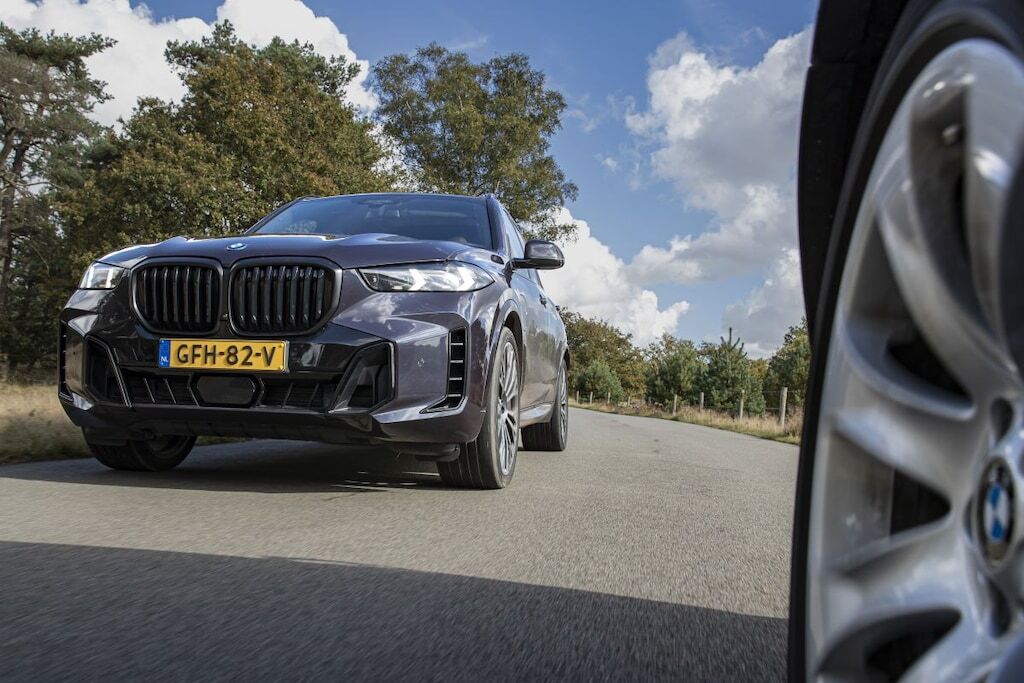
Up to 80 Kilometers Electric
The B58 six-cylinder turbo with 2,998 cc delivers together with the hybrid module a power of 490 hp and no less than 700 Nm of torque. In principle, this power source is almost ten years old and is part of BMW’s modular engine family. It was created in 2015 from a single cylinder with a capacity of 500 cc, which forms the basis for three-, four- and six-cylinder in-line engines so that parts can be exchanged on a large scale to save costs. Electric driving is possible up to a distance of approximately eighty kilometers, so those who plug in neatly can achieve a consumption that the driver of the 4.8is can only dream of. You don’t even have to try your best for 1 in 10.
From that perspective, it is remarkable to see that a car that is so much more economical, faster and safer is not necessarily better for the enthusiast. The 4.8is is clearly marketed to serve a small but very specific target group, which was about a quarter of a century ago still a niche within a niche. Nowadays, an SUV with the emphasis on street use is the norm and no one is surprised by it anymore. We owe that in part to BMW, but unfortunately that has also resulted in the M-logo being subject to inflation. That doesn’t seem to be reversible anymore.
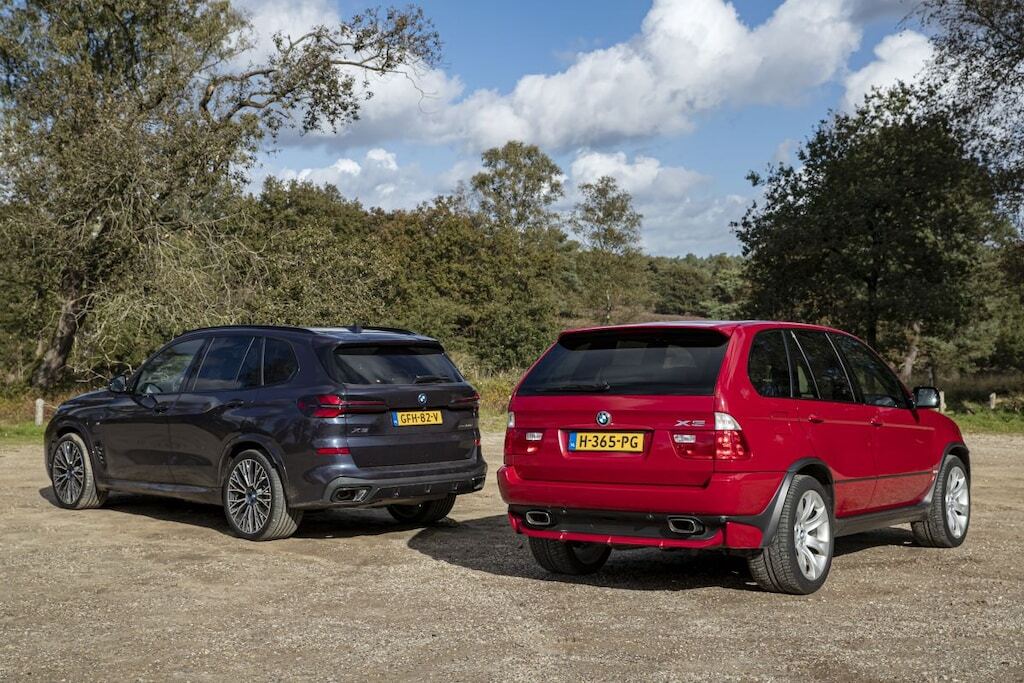
X5 Le Mans
In 2000, BMW presented the X5 Le Mans, an experimental version equipped with a V12. This was not just a V12 from the 7 Series, but an S70/3 racing engine with 6.1-liter from the BMW V12 LMR with which BMW Motorsport in collaboration with Williams F1 had won the 24 hours of Le Mans in 1999. The power of the race car was limited to 580 hp as a result of regulatory restrictions, but in this extreme X5 700 hp and 720 Nm of torque were released. This engine was incidentally based on the S70/2 that we know from the McLaren F1, another Le Mans winner. Accompanied by an ominous roar, the X5 Le Mans accelerated in just 4.7 seconds from 0 to 100 km/u and should reach 278 km/u. During the record attempt with driver Hans-Joachim Stuck on the Nürburgring, however, 311 km/u was reached. The radically lowered suspension in combination with 20-inch BBS ‘Le Mans’ rims and 315/35 tires all around ensured extreme road holding. With that, ‘Strietzel’ Stuck managed to set a record time of 7 minutes and 49 seconds on the Nordschleife. A record that stood for no less than twenty years and was only broken with a paltry 7 seconds by an Audi RS Q8. The X5 Le Mans was the first dig at the sporty M-variants that would later appear based on the X5.